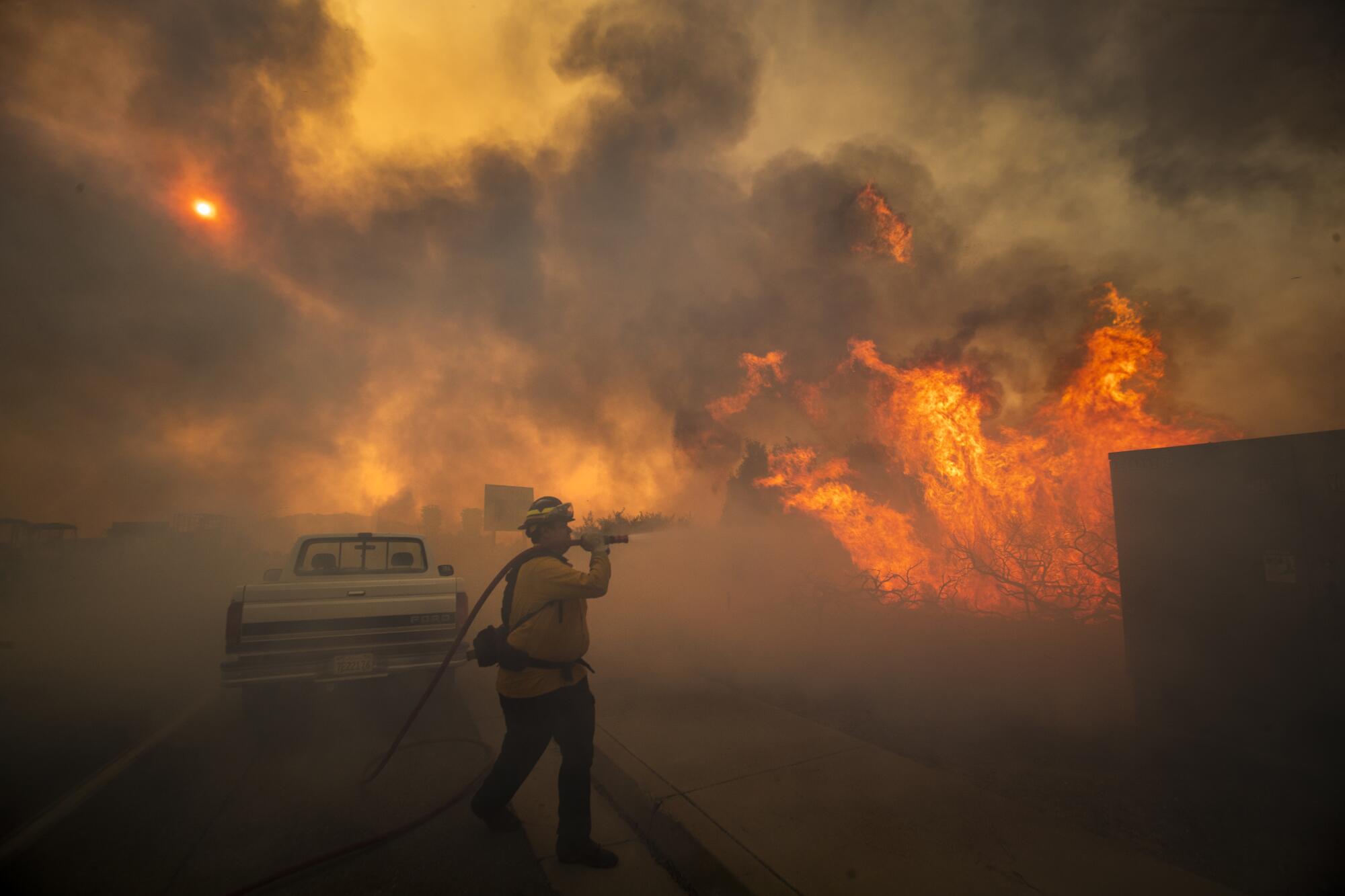When Santa Ana's 'devil spirits' arrive, LA takes notice

There may not be a weather pattern more associated with Los Angeles than the Santa Ana winds.
One of the first written descriptions of the Santa Anas appears in the diary of Commodore Robert Stockton on the night of Jan. 6, 1847; the next day his forces captured Los Angeles on behalf of the United States.
And as the city has grown into a prominent place in American pop culture, it has given worldwide fame to this local phenomenon, a name brought down by Raymond Chandler, Nancy Meyers and the Beach Boys.
Santa Ana's winds are notorious for being hot, dry, and dusty — characteristics that have earned it the nickname “devil's winds” — but the defining quality is its direction.
Unlike the prevailing winds in Southern California, which generally flow from west to east, carrying cool air from the Pacific, the Santa Anas flow from northeast to southwest out of the Mojave Desert. What causes this transformation, and why does it produce such a demonic effect?
Aggressive and impactful reporting on climate change, the environment, health and science.
Creating Santa Ana spirits, the first common ingredient is a cold fall day in the high desert of southern Nevada.
Freezing creates cold, dense, compressed air from above through a high-pressure system. Normally the surface air would be within the Great Basin formed by the Sierra Nevada and the Rocky Mountains, but the second ingredient is a low pressure system off the coast of California, which creates enough gravity to force the air out of the crater and drag it. westward toward the Pacific.

As it flows downward, the air is compressed by the higher weight of the column of air above it. The ideal gas law (PV=nRT, if high school chemistry is a dim memory) tells us that as the pressure of a gas increases, its temperature also increases. The result is that the descending air warms about 30 degrees Fahrenheit for every vertical mile it sinks.
The dry desert air, warmed by its descent, rushes along the coast. But the Transverse Ranges stand in the way, so the wind is looking for a path of least resistance to pass through Cajon and San Gorgonio. Like a water jet, winds accelerate as they enter canyons, often reaching hurricane force by the time they exit Los Angeles and San Bernardino.
Santa Ana's chilly winds can be irritating, giving people nosebleeds and sand blowing in their eyes, but extreme events can have deadly consequences. The most obvious danger is strong winds – during a particularly strong episode in December 2011, floods in excess of 50 mph toppled trees, damaged hundreds of buildings and knocked out power for hundreds of thousands of people.
The unusual wind direction can pose a particular risk to boats and marine infrastructure, as the normally well-protected harbors on the leeward side of the Channel Islands are exposed to strong winds and waves.

Strong Santa Ana offshore winds whip up incoming waves at Huntington Beach in October 2018.
(Allen J. Schaben / Los Angeles Times)
An even greater danger comes from the increased likelihood of wildfires. Hot, dry air can quickly remove moisture from plants, especially when that air is filled with strong desert winds. The Santa Anas often bring temperatures in the triple digits and humidity below 10%, resulting in dry fuel that can easily ignite. In addition, strong winds cause fires to grow and spread faster, as winds provide constant oxygen, carry sparks and bend flames closer to unburned material before the fire.
Over the past few decades, Santa Ana winds have been associated with large clusters of wildfires, including the 2007 Witch Creek fire, the 2008 Sayre fire and the 2017 Thomas fire, which was the largest wildfire in state history at the time.

A firefighter battles the Silverado fire amid strong Santa Ana winds in Irvine in October 2020.
(Allen J. Schaben / Los Angeles Times)
Until recently, the Santa Ana winds were thought to be one of the few bright spots in climate change; a 2019 paper predicted a future decrease in the frequency of Santa Ana winds, especially in September and October. The authors suggested that this is due to the presumed northward migration of the “Great Basin high” that often forms over Nevada.
However, a recent analysis published two years later by the same authors suggested that the declining trend was mainly focused on the different “flavor” of the Santa Ana winds which, although from the same place, are caused by a different method and bring great cold. to Southern California instead of heat.
Although these “cold Santa Anas” can still cause wind damage, they are less often associated with wildfire activity, and a reduction in frequency will have little effect on fire risk. Unfortunately, it seems that those hot, dry days when the wind stings your eyes and sparks fly are here to stay.
Ned Kleiner is a scientist and disaster hero at Verisk. He holds a doctorate in atmospheric science from Harvard University.
Source link



